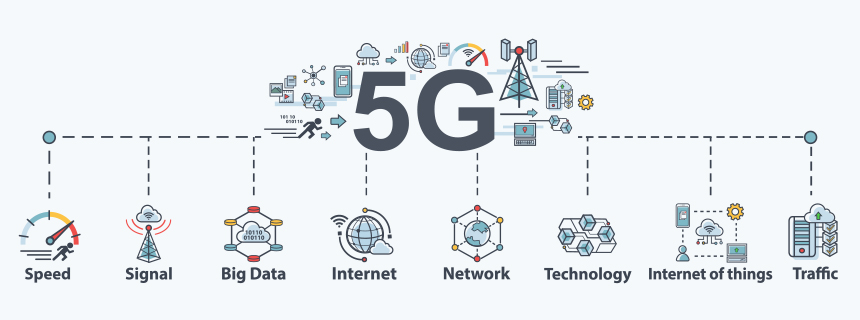CJ Attard Insights
Exploring the latest trends and insights in various industries.
5G and the Speed of Life: Are We Ready for the Next Leap?
Discover how 5G will revolutionize our lives and if we're truly prepared for this game-changing leap. Join the future now!
How 5G Technology Will Transform Daily Life: What You Need to Know
The advent of 5G technology promises to revolutionize our daily lives in ways we are only beginning to comprehend. This next-generation wireless network offers lightning-fast internet speeds, significantly reducing latency and enabling seamless connectivity across devices. Imagine being able to download a full-length movie in seconds or experiencing ultra-reliable real-time communication during video calls, all thanks to the capabilities of 5G. More importantly, its impact extends beyond mere speed; it will empower advancements in various sectors such as healthcare, education, and transportation, enhancing how we interact with technology and each other.
One of the most exciting aspects of 5G technology is its potential to support the Internet of Things (IoT) on an unprecedented scale. As more smart devices connect to the network, everyday activities will become increasingly automated and interconnected. For example, smart homes can monitor energy usage, alert owners to maintenance issues, and even provide security measures all through a single app. Furthermore, cities will become 'smart,' utilizing 5G to optimize traffic flows and enhance public safety. This transformation will not only improve convenience but also pave the way for a more sustainable and efficient future.

Is Your City Ready for 5G? Exploring Infrastructure and Readiness
As cities around the globe gear up for the rollout of 5G technology, it is crucial for local governments and stakeholders to assess their current infrastructure. Key factors include the availability of fiber optics, the number of cell towers, and the readiness of existing utility poles to support new transmitters. The integration of 5G requires a significant level of digital infrastructure, meaning cities must evaluate whether they have the physical and technological resources in place to support this next-generation network.
Community engagement is also essential in determining 5G readiness. Local residents should be informed about the potential benefits and risks associated with 5G technology. Furthermore, city planners should host discussions or forums to gather input on infrastructure development plans. This collaborative approach can ensure that when 5G does arrive, it not only enhances connectivity but also aligns with the community's needs and concerns.
The Impact of 5G on IoT: Are We Prepared for a Connected Future?
The advent of 5G technology is set to revolutionize the landscape of the Internet of Things (IoT), enhancing connectivity, speed, and responsiveness. With data transfer rates up to 100 times faster than 4G, the potential for real-time communication among devices is greater than ever. This shift allows for an explosion of connected devices, leading to a predicted increase in the number of IoT devices worldwide, estimated to reach 75 billion by 2025. However, the integration of 5G into our daily lives also presents challenges, such as ensuring robust security frameworks and addressing the need for infrastructure upgrades.
As we forge ahead into a connected future, it is crucial to assess whether we are truly prepared to handle the ramifications of this technological leap. Questions surrounding privacy, data management, and interoperability among devices must be addressed. According to industry experts, collaboration among stakeholders—including governments, tech companies, and consumers—is essential for creating standards and protocols that will govern IoT ecosystems. Failure to adapt could lead to complications in how we interact with our increasingly connected devices and threaten the very benefits that 5G promises to deliver.